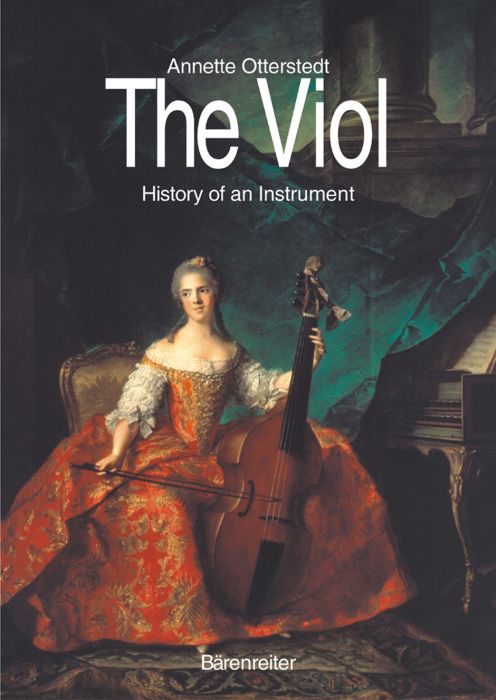Want to be the first to hear latest news and find out about our exclusive promotions.
Sign Up for Our Newsletter:
The Viol: History of an Instrument (Hardback)
Otterstedt, Annette
Otterstedt The Viol: History of an Instrument (Hardback)
The successful book by Annette Otterstedt, “Die Gambe . Kulturgeschichte und praktischer Ratgeber“ is made available in an English version.
The author has revised the original edition thoroughly, taking in the most recent results of research, which is particularly obvious in the enlarged chapters on the early history of the instrument, women playing the viols, the practice of viol consort, transposition and pitch, and a newly added chapter on the 20th-century viol.
This is not merely a standard work for viol players and early music enthusiasts: it is as yet without equal as a brilliantly written, exemplary introduction into the world of an instrument.
Contents
- Acknowledgements
- Hat, Stick, and Boots: A Brief Philosophical Introduction
- Humanism and Rhetoric
- Back to the Sources
- All Ye Saints, Come to My Aid
- Part One - The Life and Opinions of a Princess
- Prelude: Daughter of Orient and Occident
- The Curtain Rises
- A Noble Page in Hiding: The Viol in France, 1550-1630
- The Humanists' Delight: Italy, 1550-1630
- The Entranced Smile: Germany, 1550-1630
- Rainy Days in Consort: England, 1550-1630
- First Legend of the Saints: The Grandee of the Viol, Alfonso Ferrabosco (c. 1575-1628)
- Years of no Grace in the Country, England after 1630
- Second Legend of the Saints: Three Stars in Epiphany William Lawes, John Jenkins, Christopher Simpson
- Hard Times on the Continent: Central Europe in the Second Half of the 17th Century
- Northern Germany, The Netherlands, Italy, Southern Germany, and Bohemia
- The Huguenots's Maiden Friend: France after 1630
- Third Legend of the Saints: The Last of the Humanists, Le Sieur de Sainte Colombe (d. before 1700)
- In the Royal Sun: France in the Late 17th Century
- An Unseemly Instrument? Viol-Playing Women
- The Decline and Fall in the Roman Empire: The 18th Century
- Suspended Animation: The 19th Century
- The Principle of Hope: The 20th Century
- Part Two - Meeting the Family
- A Word about Respectability
- The Respublica of Consort
- The 16th Century, The 17th Century, Instrumentation, The Instruments, The Role of the Organ, The Music
- No Less Swift than the Violin itself: The Bass Viol
- The Viola Bastarda, The Division Viol, The Lyra Viol, Other Viols with Sympathetic Strings, The Seven-Stringed Bass Viol
- The Slighted Inner Part: The Tenor Viol
- Sweet, but too Weak: The Treble Viol, Treble Viol and Dessus de Viole, Pardessus de Viole and Quinton
- A Royal Rumble: The Violone
- A Humanist Parody: The Arpeggione
- Observations on Viol Construction Renaissance, Italian, English, French and German Viols and the Late Period
- Conversions, Forgeries, Reconstructions
- Pitch
- Transposition
- The Well-Tuned Violdigamb, Germany, France, Italy and Spain in the 16th Century
- France in the 17th and 18th Centuries, England in the 17th Century, The Violone
- The Well-Tempered Viol: Muiscal Temperament
- The Salt and Mustard of Music: Ornamentation "Artificioso" and "Graceful" Play, Should One Ornament in Consort?, The Well-Shaped Lady's Leg
- Aspects of Playing Technique, Holding the Instrument
- The Left Hand "Holds" and "Tenues", Position of the Left Thumb, Open String or Stopped String?, Changing Positions, Treble-Viol Fingering
- The Right Hand, The Use of the Bow, Forms of Articulation
- Part Three - Maintaining a Princess in Style
- A Word about Quality, What is a Good Instrument?, How to Procure a Good Instrument
- The Well-Appointed Viol, Construction and Materials, Ornaments, The Varnish, Accessories
- The Bow
- Beauty in Eclipsa: Conclusion
- Appendix: Notes
- Bibliography
- Index
- List of Illustrations
